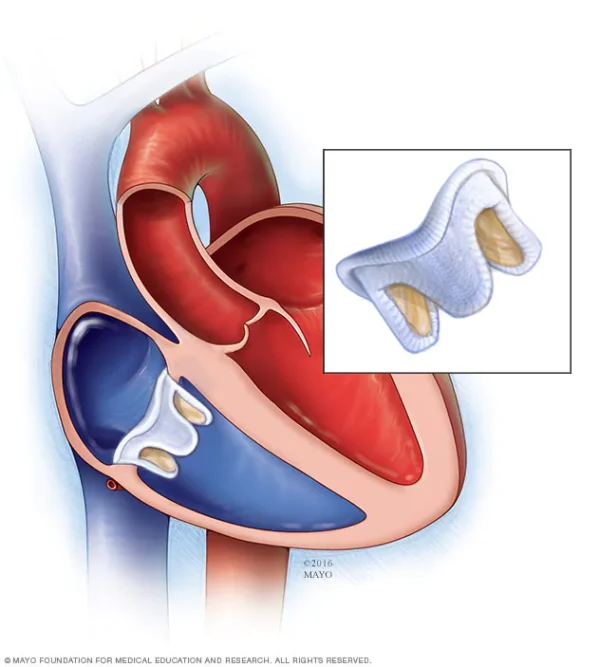
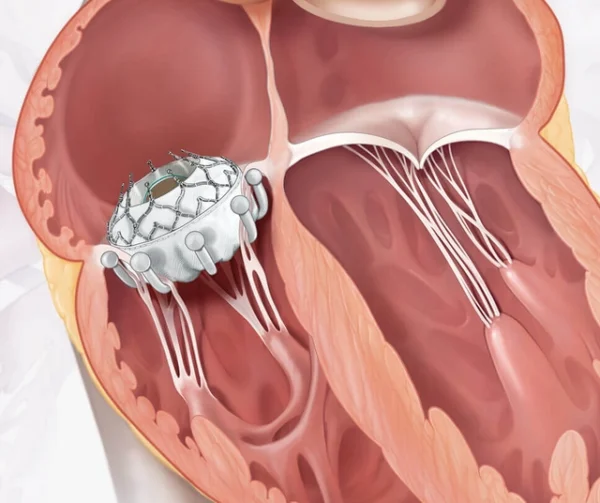
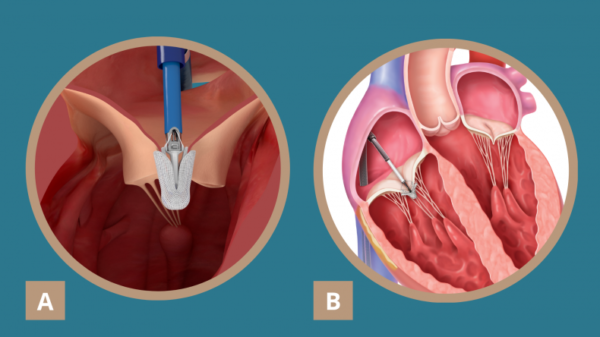
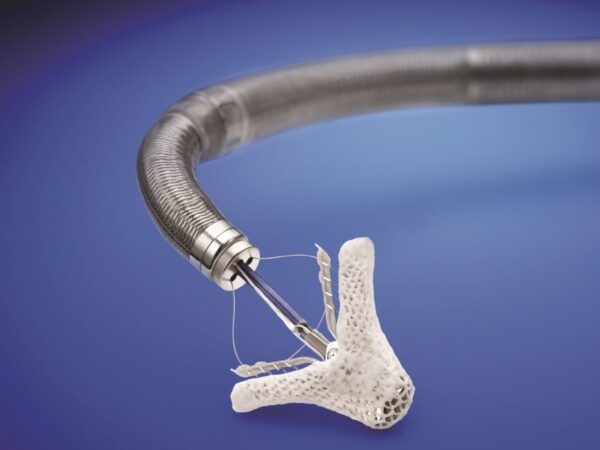
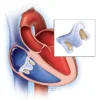
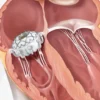
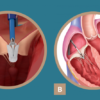
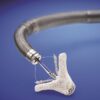
Free
Embark on a transformative journey with our exceptional range of medical treatments. As a leading medical tour operator, we offer a comprehensive selection of world-class treatments and procedures to address your unique healthcare needs. From advanced surgeries to cutting-edge therapies, our team of experienced professionals is dedicated to providing top-notch care and ensuring your comfort and satisfaction. Discover a new level of healthcare excellence with our tailored treatment options. Book now to start your journey towards a healthier and happier you.
Tricuspid valve repair (TVR) is a surgical procedure to repair a damaged or malfunctioning tricuspid valve, which is one of the four valves in the heart. The tricuspid valve is located between the right atrium and right ventricle and prevents blood from flowing back into the atrium during ventricular contraction.
**Indications for TVR:**
– Severe tricuspid regurgitation, which is the backward flow of blood from the right ventricle into the right atrium
– Tricuspid stenosis, which is the narrowing of the tricuspid valve opening
– Infective endocarditis involving the tricuspid valve
– Rheumatic heart disease
– Congenital heart defects affecting the tricuspid valve
**Preoperative Evaluation:**
– Comprehensive history and physical examination
– Echocardiography to assess the severity of tricuspid regurgitation or stenosis, as well as the anatomy of the tricuspid valve
– Other imaging studies, such as cardiac MRI or CT, may be necessary in some cases
**Surgical Techniques:**
There are two main surgical approaches for TVR:
1. **Open-heart surgery:** This involves opening the chest and directly visualizing the tricuspid valve. The surgeon may perform various techniques to repair the valve, such as:
– **Annuloplasty:** This involves tightening the ring around the tricuspid valve to reduce regurgitation.
– **Valve leaflet repair:** This involves repairing or replacing the damaged valve leaflets.
– **Valve replacement:** This involves removing the damaged valve and replacing it with a mechanical or biological prosthesis.
2. **Transcatheter tricuspid valve repair:** This is a minimally-invasive procedure that involves delivering a device to the tricuspid valve through a catheter inserted into a vein. The device is then used to repair the valve without the need for open-heart surgery.
**Postoperative Care:**
– After surgery, patients will typically stay in the hospital for several days for monitoring and recovery.
– Medications may be prescribed to help manage symptoms and prevent complications.
– Regular follow-up appointments will be necessary to monitor the function of the repaired tricuspid valve.
**Outcomes:**
– The success of TVR depends on various factors, including the underlying cause of the tricuspid valve dysfunction, the severity of the condition, and the patient’s overall health.
– In general, most patients experience significant improvement in their symptoms and quality of life after successful TVR.
– The long-term durability of TVR varies depending on the type of repair performed and the underlying cause of the valve dysfunction.
Tricuspid valve repair is suitable for individuals who have a malfunctioning tricuspid valve and meet certain criteria. The decision to undergo tricuspid valve repair is made on a case-by-case basis, taking into consideration factors such as the severity of the valve dysfunction, the overall health of the patient, and the potential benefits of the procedure.
Tricuspid valve repair may be suitable for individuals who:
Tricuspid valve repair may not be suitable for certain individuals depending on their specific condition and circumstances. The decision to pursue tricuspid valve repair is made on a case-by-case basis, and there are some factors that may make a person not suitable for the procedure. These factors may include:
Tricuspid valve repair offers several advantages compared to other treatment options or not undergoing any intervention. Some of the advantages of tricuspid valve repair include:
Like any surgical procedure, tricuspid valve repair carries some risks and potential complications. While complications are relatively rare, it is important to be aware of them. Some possible complications of tricuspid valve repair include:
Before undergoing tricuspid valve repair, there are several important aspects of care that may be involved. These can include:
After undergoing tricuspid valve repair, proper aftercare is essential to promote healing, minimize complications, and ensure a successful recovery. Here are some important aspects of aftercare for tricuspid valve repair:
Hospital Stay: Following the surgery, you will typically stay in the hospital for a few days. During this time, your healthcare team will closely monitor your condition, manage pain and discomfort, and administer medications as needed.
Wound Care: Take care of the surgical incision site as instructed by your healthcare provider. Keep the incision clean, dry, and protected to prevent infection. Follow any specific dressing changes or wound care instructions provided to you.
Medications: Your healthcare provider will prescribe medications to support your recovery. These may include pain medications, antibiotics to prevent infection, and medications to manage any underlying heart conditions. Take all medications as directed and notify your healthcare provider if you experience any adverse reactions.
Activity and Rest: It is important to balance rest and activity during your recovery period. While it is crucial to get up and move around to prevent complications such as blood clots, you should also listen to your body and avoid overexertion. Gradually increase your activity level as advised by your healthcare provider.
Follow-Up Appointments: Attend all scheduled follow-up appointments with your healthcare provider. These appointments allow your provider to monitor your progress, assess the effectiveness of the repair, and make any necessary adjustments to your treatment plan.
Lifestyle Changes: Depending on the underlying cause of your tricuspid valve disease, your healthcare provider may recommend certain lifestyle modifications. These may include dietary changes, regular exercise, smoking cessation, and managing any underlying medical conditions such as high blood pressure or diabetes.
Emotional Support: The recovery process from heart surgery can be challenging both physically and emotionally. Seek support from family, friends, or support groups to cope with any emotional difficulties you may encounter during your recovery.
Only logged in customers who have purchased this product may leave a review.
Tricuspid valve repair (TVR) is a surgical procedure to repair a damaged or malfunctioning tricuspid valve, which is one of the four valves in the heart. The tricuspid valve is located between the right atrium and right ventricle and prevents blood from flowing back into the atrium during ventricular contraction.
**Indications for TVR:**
– Severe tricuspid regurgitation, which is the backward flow of blood from the right ventricle into the right atrium
– Tricuspid stenosis, which is the narrowing of the tricuspid valve opening
– Infective endocarditis involving the tricuspid valve
– Rheumatic heart disease
– Congenital heart defects affecting the tricuspid valve
**Preoperative Evaluation:**
– Comprehensive history and physical examination
– Echocardiography to assess the severity of tricuspid regurgitation or stenosis, as well as the anatomy of the tricuspid valve
– Other imaging studies, such as cardiac MRI or CT, may be necessary in some cases
**Surgical Techniques:**
There are two main surgical approaches for TVR:
1. **Open-heart surgery:** This involves opening the chest and directly visualizing the tricuspid valve. The surgeon may perform various techniques to repair the valve, such as:
– **Annuloplasty:** This involves tightening the ring around the tricuspid valve to reduce regurgitation.
– **Valve leaflet repair:** This involves repairing or replacing the damaged valve leaflets.
– **Valve replacement:** This involves removing the damaged valve and replacing it with a mechanical or biological prosthesis.
2. **Transcatheter tricuspid valve repair:** This is a minimally-invasive procedure that involves delivering a device to the tricuspid valve through a catheter inserted into a vein. The device is then used to repair the valve without the need for open-heart surgery.
**Postoperative Care:**
– After surgery, patients will typically stay in the hospital for several days for monitoring and recovery.
– Medications may be prescribed to help manage symptoms and prevent complications.
– Regular follow-up appointments will be necessary to monitor the function of the repaired tricuspid valve.
**Outcomes:**
– The success of TVR depends on various factors, including the underlying cause of the tricuspid valve dysfunction, the severity of the condition, and the patient’s overall health.
– In general, most patients experience significant improvement in their symptoms and quality of life after successful TVR.
– The long-term durability of TVR varies depending on the type of repair performed and the underlying cause of the valve dysfunction.
Tricuspid valve repair is suitable for individuals who have a malfunctioning tricuspid valve and meet certain criteria. The decision to undergo tricuspid valve repair is made on a case-by-case basis, taking into consideration factors such as the severity of the valve dysfunction, the overall health of the patient, and the potential benefits of the procedure.
Tricuspid valve repair may be suitable for individuals who:
Tricuspid valve repair may not be suitable for certain individuals depending on their specific condition and circumstances. The decision to pursue tricuspid valve repair is made on a case-by-case basis, and there are some factors that may make a person not suitable for the procedure. These factors may include:
Tricuspid valve repair offers several advantages compared to other treatment options or not undergoing any intervention. Some of the advantages of tricuspid valve repair include:
Like any surgical procedure, tricuspid valve repair carries some risks and potential complications. While complications are relatively rare, it is important to be aware of them. Some possible complications of tricuspid valve repair include:
Before undergoing tricuspid valve repair, there are several important aspects of care that may be involved. These can include:
After undergoing tricuspid valve repair, proper aftercare is essential to promote healing, minimize complications, and ensure a successful recovery. Here are some important aspects of aftercare for tricuspid valve repair:
Hospital Stay: Following the surgery, you will typically stay in the hospital for a few days. During this time, your healthcare team will closely monitor your condition, manage pain and discomfort, and administer medications as needed.
Wound Care: Take care of the surgical incision site as instructed by your healthcare provider. Keep the incision clean, dry, and protected to prevent infection. Follow any specific dressing changes or wound care instructions provided to you.
Medications: Your healthcare provider will prescribe medications to support your recovery. These may include pain medications, antibiotics to prevent infection, and medications to manage any underlying heart conditions. Take all medications as directed and notify your healthcare provider if you experience any adverse reactions.
Activity and Rest: It is important to balance rest and activity during your recovery period. While it is crucial to get up and move around to prevent complications such as blood clots, you should also listen to your body and avoid overexertion. Gradually increase your activity level as advised by your healthcare provider.
Follow-Up Appointments: Attend all scheduled follow-up appointments with your healthcare provider. These appointments allow your provider to monitor your progress, assess the effectiveness of the repair, and make any necessary adjustments to your treatment plan.
Lifestyle Changes: Depending on the underlying cause of your tricuspid valve disease, your healthcare provider may recommend certain lifestyle modifications. These may include dietary changes, regular exercise, smoking cessation, and managing any underlying medical conditions such as high blood pressure or diabetes.
Emotional Support: The recovery process from heart surgery can be challenging both physically and emotionally. Seek support from family, friends, or support groups to cope with any emotional difficulties you may encounter during your recovery.
There are no reviews yet.
Only logged in customers who have purchased this product may leave a review.
Choosing the right hospital and physician are important factors to consider that significantly influence a patient’s treatment. The preferred choice for many patients is choosing private care.
Choosing the right hospital and physician are important factors to consider that significantly influence a patient’s treatment.
Reviews
There are no reviews yet.